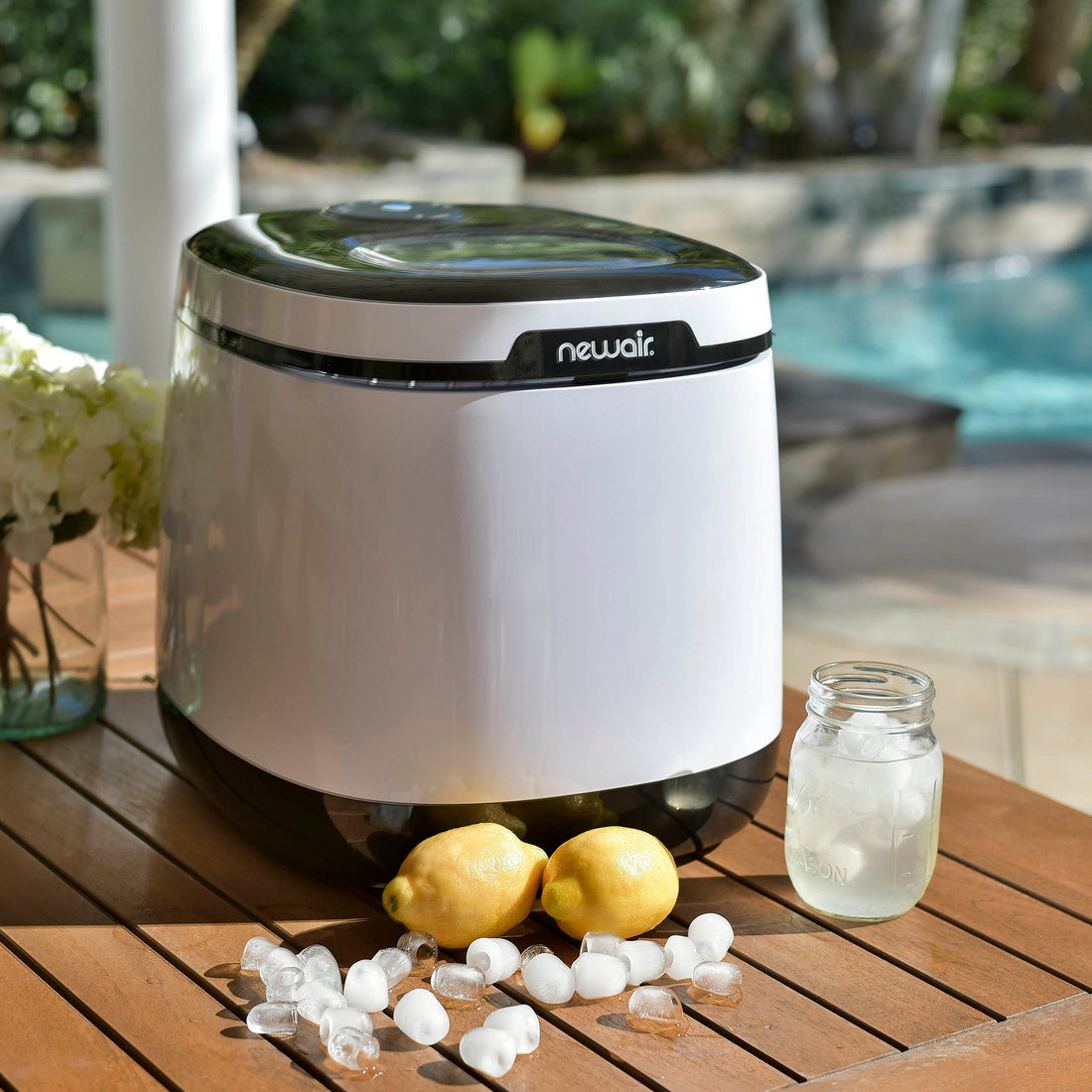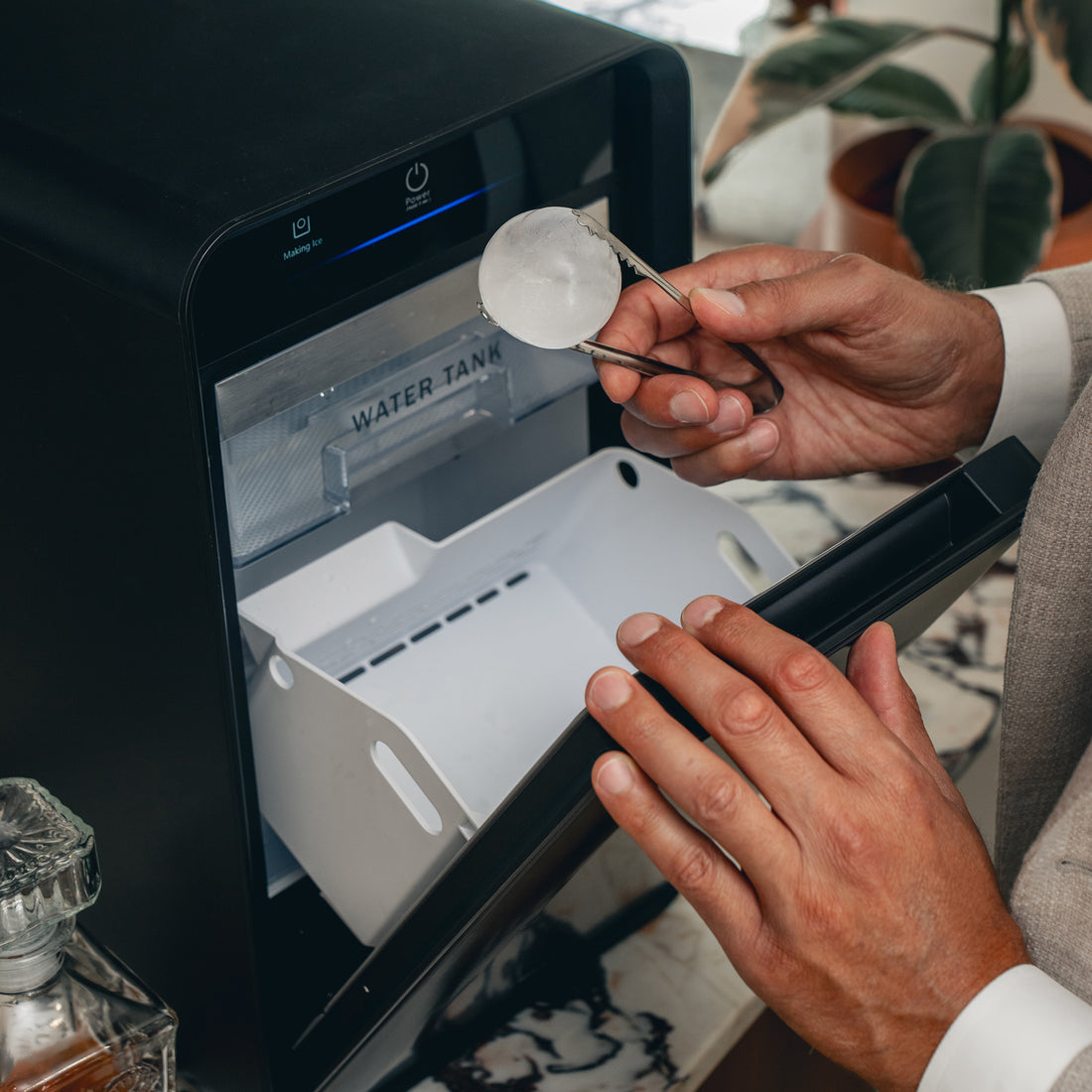How Long Does it Take for Ice Cubes to Freeze?
Whether you’re hosting a party or just trying to unwind after a long week, few things are more frustrating than opening the freezer to find empty ice cube trays. Now what? That glass of whiskey or wine isn’t going to cool itself, and the last thing you want to do is run to the gas station for a bag of ice or wait hours for trays to freeze.
Ever found yourself in that exact moment, wondering how long it actually takes for ice cubes to freeze? You’re not alone. It’s a surprisingly common question, and the answer depends on a few factors. While traditional freezers can take anywhere up to four hours, portable ice makers can dramatically cut down the wait time.
In this post, we’ll break down how long it really takes to freeze ice in a standard kitchen freezer, why fast ice matters (especially when you're entertaining), and a few simple tricks to speed up the process. Keep reading to make sure you’re never caught without enough ice again.
How Long Does It Take Ice Cubes to Freeze?
Freezing ice cubes with ice trays or your fridge’s built-in ice maker is straightforward, but not always fast.
Using Ice Cube Trays
Many people still make ice cubes the old-fashioned way: filling plastic trays with water and placing them in the freezer. While it’s simple, it’s also slow. For cubes to fully freeze (and not just on the surface), the water needs to reach 32°F all the way through, which takes about three to four hours in your home freezer. No thanks!
Several things influence how long that takes. Smaller cube molds will freeze faster than larger ones, and trays with more airflow between cubes can help speed things up. Your freezer’s internal temperature also plays a big role. Most freezers are set around 0°F, but adding warm food or frequently opening the door can raise that temperature and delay freezing. Even the type of water (filtered vs tap) can make a slight difference in freezing speed and ice clarity.
While trays are inexpensive and easy to use, they’re not the best solution for every situation. They’re fine when you only need a little ice, but not very practical for things like:
- Entertaining a group of people
- Impromptu gatherings of friends or family
- Larger households (especially with kids)
- Heat waves, when cold beverages are desired
- Small freezers with limited space for trays
Using a Built-In Ice Maker
Many modern refrigerators come with built-in ice makers. These systems typically produce ice in 90 minutes to two hours, which is faster than trays.
Convenience is the biggest upside here. The fridge makes and stores the ice for you, and some even dispense it directly from the door. But there are drawbacks: Built-in ice makers can’t always keep up with high demand, and over time, they may clog, slow down, or break. For many people, that makes them unreliable for everyday use especially when hosting or restocking quickly is a priority.
Why Fast Ice Matters
Have you ever had company drop by unexpectedly and realized you didn’t have enough ice for cold drinks? It’s inconvenient… and a little awkward. That’s when face ice really matters.
Whether you frequently entertain, have a house full of kids, or simply enjoy a cold drink at the end of the day, waiting hours for ice just isn’t ideal. Traditional freezer trays and built-in ice makers often can’t keep up. Just think about how much ice you need for drinks and treats like:
- Ice coffee and tea
- Lemonade
- Room temperature soda
- Fruit smoothies
- Mocktails
- Margaritas
- Mojitos
- Snow cones
Most people end up making a last-minute run to the store for a bag of ice. But that means leaving your own party, dealing with a bulky bag, and trying to cram it into an already packed freezer. And over time, the cost adds up.
Fast ice isn’t just for parties. You might need it on short notice for:
- A rapid change in the weather
- Kids bringing friends home
- Packing a cooler for a picnic or trip
- Icing an injury or sore muscles after a workout
When ice is part of your daily routine, waiting hours for trays to freeze just doesn't cut it.
How Can I Make Ice Freeze Faster?
Need ice in a hurry? There are a few science-backed ways to speed up the freezing process, with some more obvious than others.
Check Your Ice Maker
If your refrigerator has a built-in ice maker, make sure it’s running efficiently. Keep the water line clear, and consider using filtered water for better-tasting cubes. Regular maintenance can go a long way in improving output.
Signs your ice maker might not be working properly:
- Little or no ice production
- Cloudy or bad-tasting ice
- Irregularly shaped cubes
- Ice maker running constantly
- Unusual or loud noises
- Water leaks around the refrigerator
- Unpleasant odors from the freezer
- Warning lights or error indicators
These could all signal that your system isn’t working as it should.
Use Metal Ice Trays Instead of Plastic
Still relying on trays? Switching to stainless steel can help. Metal conducts cold more efficiently than plastic or silicone, allowing water to freeze faster (sometimes shaving off 30 minutes or more). Just make sure your freezer is set to the ideal temperature (around 0°F). Going lower might seem like a shortcut, but it can overwork the system and affect overall performance.
Try the Mpemba Effect
One of the more surprising tricks is to use hot water. Yes, hot water to make your ice. Known as the Mpemba Effect, this phenomenon suggests that, under certain conditions, hot water can freeze faster than cold. The effect isn’t fully understood, but several scientific theories attempt to explain it:
- Evaporation: Warm water evaporates more quickly than cool water, which leaves behind less water to freeze. Since the resulting ice cubes are slightly smaller, they freeze more quickly.
- Released Gases: When tap water is boiled, gases and minerals are released into the air. This may slightly raise the freezing point, allowing the ice to freeze solid more quickly than unboiled water. By this theory, distilled water may also freeze slightly faster than tap water.
- Convection: As hot water cools, the temperature difference between the hot bottom and cold surface of the ice cube tray causes a faster rate of cooling due to convection (the movement of heat within the fluid).
- Covalent Bonds: A study at Nanyang Technological University in Singapore examined this at a molecular level and found that heating shortens the bonds between hydrogen and oxygen atoms in water molecules. This allows heat to escape more rapidly, meaning hot water can freeze faster than cold water.
If you try this method, always use clean, boiled water (not hot tap water) to ensure it’s safe for drinking. Let it cool slightly before pouring into trays.
Invest in a Countertop Portable Ice Maker
If you need ice fast, a portable ice maker is one of the easiest and most efficient solutions.. These compact, surprisingly powerful appliances are perfect when your freezer just can’t keep up.
Roughly the size of a bread box, portable ice makers work anywhere you have access to a power outlet. Their versatility makes them perfect for a range of situations, including:
- RV travel and snowbirding
- Camping and fishing trips
- Tailgates and sporting events
- Backyard parties and outdoor entertaining
They’re also a smart addition to apartments, tiny homes, or any kitchen without a built-in ice maker.
Portable models work by pumping water from an internal reservoir over super-cooled metal prongs or trays. Ice begins forming almost instantly, and many portable ice makers can produce ice in as little as 15 minutes. That’s faster than any freezer or fridge ice maker. Some countertop models can produce up to 50 pounds of ice per day, keeping you well-stocked for whatever comes up.

Featured SKU: AI-250W
Another bonus: You can customize your ice. Some machines produce bullet-shaped ice, while others offer nugget or classic cube options. For whiskey drinkers, premium models create slow-melting clear cubes or large spheres, perfect for savoring a bourbon or single malt without watering it down too quickly.

Shop our Whiskey Ice Ball Maker that’s sold out three times!
Featured SKU: NIM005BSW0
Compared to the slower freezing process of ice trays or even most built-in ice makers, a countertop unit delivers speed, volume, and quality—all without taking up much space.
Shop Newair’s Portable Ice Makers
For reliably fast and plentiful ice, nothing beats a dedicated ice maker, and Newair has options for every space and budget. Whether you love to entertain, fuel up with iced coffee, work out regularly, mix up cocktails, or need to keep coolers packed for the kids, a portable ice maker is a smart, convenient investment.
Newair offers a wide selection of compact, high-performing countertop and undercounter ice makers. Shop online with fast shipping, easy returns, and frequent sales on featured models. While browsing, explore other compact appliances designed to elevate your space, including beverage fridges and humidors.
Check out our sales page regularly, as discounted products are always being added. While browsing, explore other compact appliances perfect for home entertaining, like beverage fridges and humidors.
Once you’ve found the right model, don’t forget to register your product to activate our one-year warranty.






